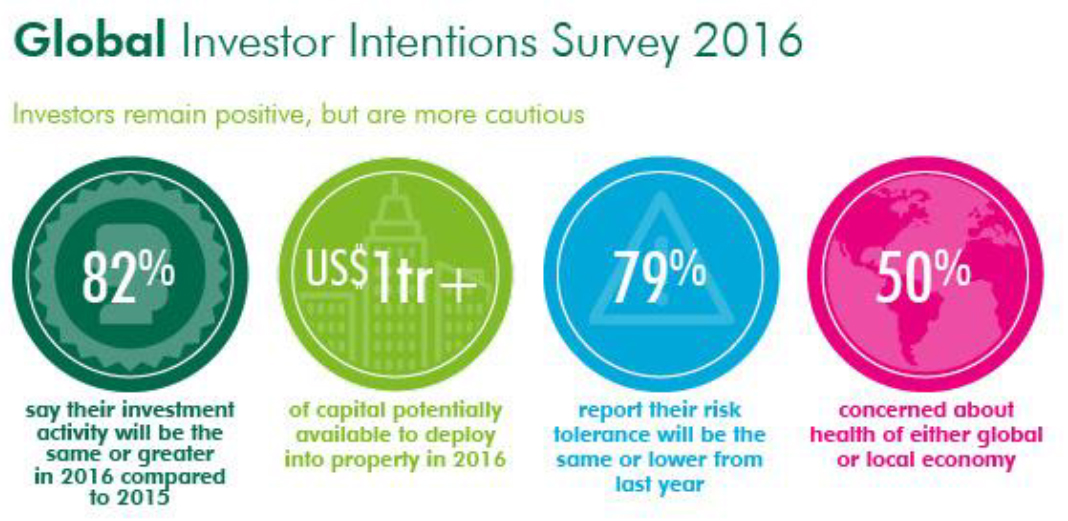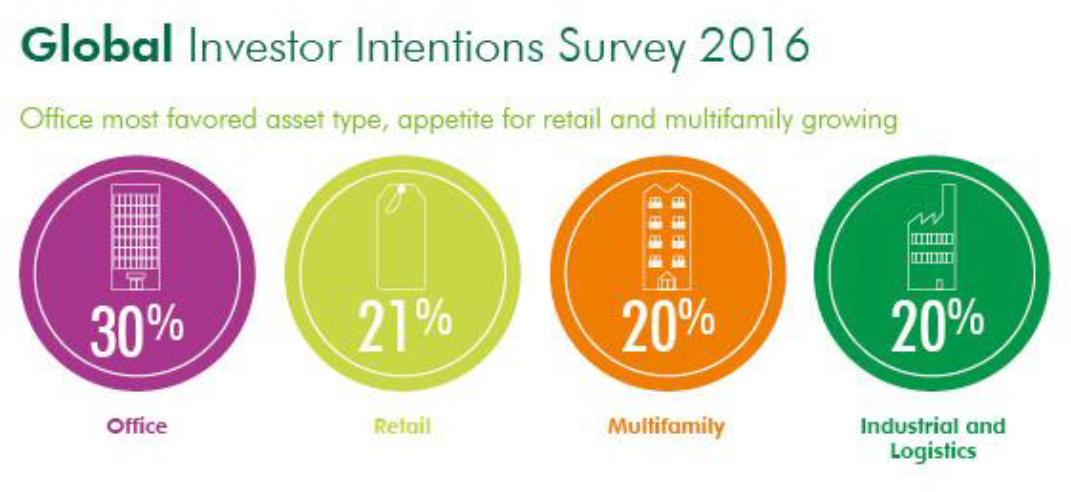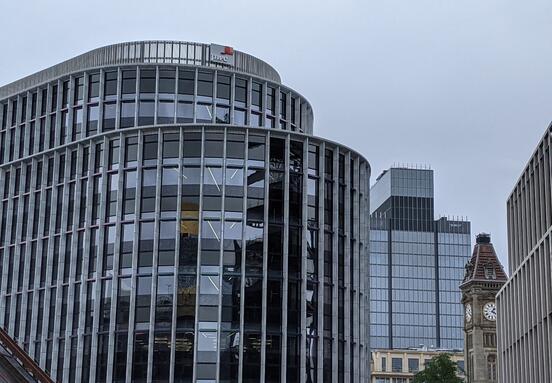The 2016 survey was conducted between January and early February, and captured negative sentiment arising from volatility in China's stock market at the time. The survey asked investors how much capital (gross acquisitions) they would deploy in real estate purchases this year. The results reveal there is approximately $1.16 trillion of capital targeting property investment in 2016--an increase of 3 percent from 2015 levels in local currency terms.
The majority of investors (82 percent) indicate that their buying activity will increase or remain the same compared to 2015. While these results are down slightly from the last two years--86 percent in 2015 and 93% in 2014--this is not indicative of widespread concern about the short- or medium-term performance of real estate as an asset class. More likely, it reflects some concerns about pricing, the direction of U.S. interest rates and current volatility in equities.

"Investors continue to find real estate appealing, chiefly due to the relatively higher returns and stability on offer. We believe that 2016 will be another active year for the global real estate investment market, with capital flows 6 percent higher than in 2015. There is more than $1 trillion of capital targeting real estate in 2016 and this volume of expenditure will maintain support for global real estate prices," said Chris Ludeman, Global President, Capital Markets, CBRE.
"Investment strategies are shifting amid concerns about the health of the global economy. Not surprisingly, 2016 looks likely to be a "risk-off" year, with investors reporting they are more focused on core assets and less likely to seek secondary, value-add and alternative opportunities," added Mr. Ludeman.
North America is the most popular destination for investment (48 percent), ahead of Western Europe (28 percent). This is consistent with the relative sizes of the investable property markets in these locations. The results are similar to 2015, apart from an increase in interest in Central and Eastern European markets due to the pace of economic recovery in that region and relatively attractive pricing.
Investors continue to express a strong preference for gateway core cities. In EMEA, London topped the list of target cities, although is less popular than in previous years. If the major German cities are grouped together, they are slightly ahead of London. In the Americas, Los Angeles, New York and Dallas-Ft. Worth are the top three targets of preference. In Asia Pacific (APAC), Sydney and Tokyo are the most popular destinations--exchanging places since 2015. Notably, there are now two Australian cities among the top five: Sydney and Brisbane.

Interest in cross-border investment remains strong, with two out of five respondents stating that they are seeking opportunities outside their home region. This is especially true of APAC-based investors, particularly South Korean and Singaporean, who are more likely to invest outside their home region than their colleagues in the Americas and EMEA.
One of the most notable features of this year's survey is a jump in demand for core assets and a decline in interest in good secondary and value-add properties. Twenty-one percent of survey respondents said their risk appetite for secondary assets is higher in 2016 compared to last year, down significantly from 37 percent. If this plays out, it is likely that the spread between prime and secondary yields will begin to widen, following several years of compression.
In terms of asset classes, office (30 percent) remains the most popular property type globally, though interest is down slightly compared to last year. There is a notable uptick in interest for retail (21 percent) and multifamily assets (20 percent) from 2015.







